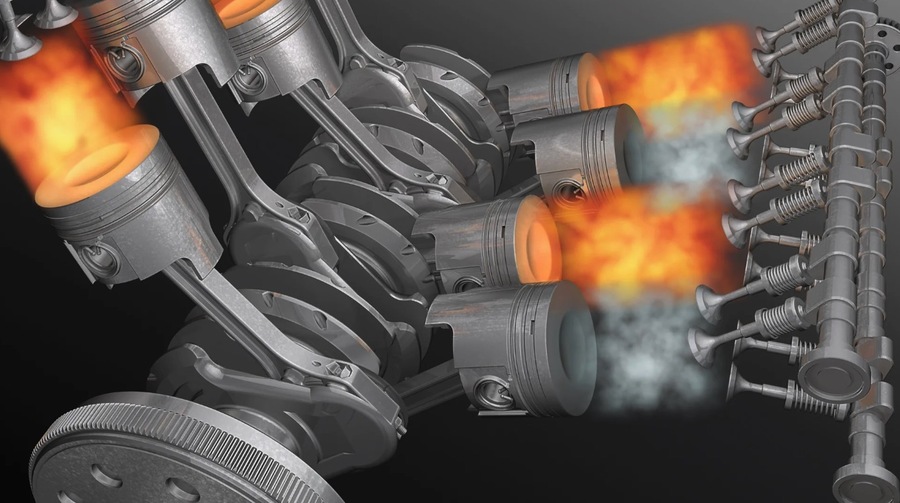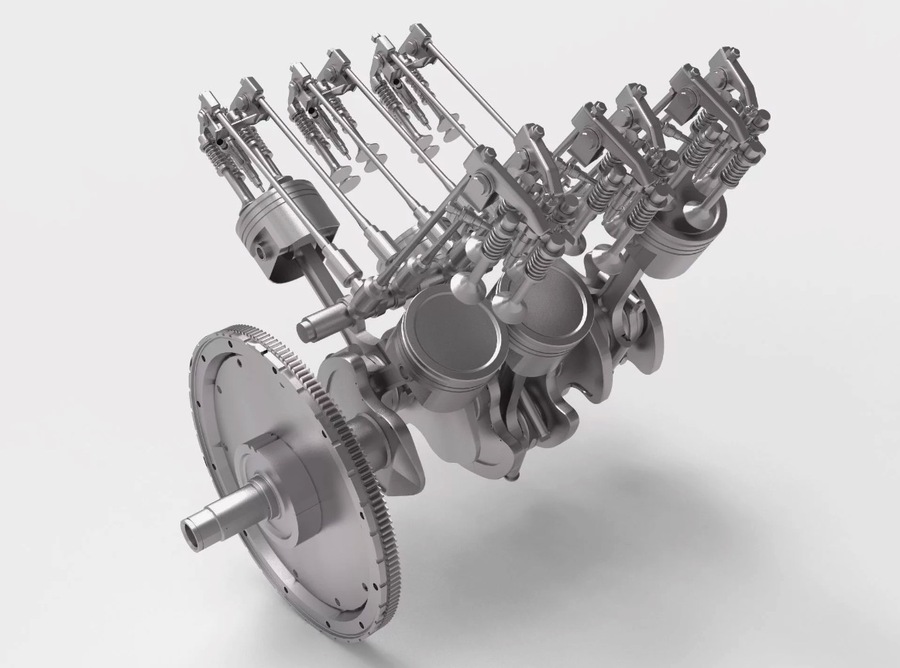
Understanding Internal Combustion Engines: Definition, History, and Modern Applications
An internal combustion engine (ICE) is a type of heat engine where the combustion of fuel occurs within a confined space called a combustion chamber. This process generates expanding gases that directly apply force to a component of the engine, such as pistons or turbine blades, converting chemical energy into mechanical energy. Internal combustion engines are widely used in various applications, including automobiles, aircraft, and marine vessels, due to their efficiency and power.
History of Internal Combustion Engines
The development of internal combustion engines (ICE) has been a pivotal factor in technological advancements, particularly in the automotive industry. Here’s a detailed look at some key milestones in the history of ICE:
Lebon Gas Engine
The earliest conceptualization of an internal combustion engine dates back to the late 18th century with the work of Philippe Lebon, a French engineer. In 1801, Lebon patented a gas engine that used coal gas as fuel. Although his design was never built, it laid the groundwork for future developments in internal combustion technology by proposing the use of an explosive mixture of air and fuel.
Lenoir Engine
In 1860, Belgian engineer Jean Joseph Étienne Lenoir developed the first commercially successful internal combustion engine. The Lenoir engine used a mixture of coal gas and air, ignited by an electric spark. This engine was a two-stroke design and marked a significant improvement over steam engines, offering more efficiency and practicality for smaller applications.
Otto Engine
Nikolaus Otto, a German engineer, made a groundbreaking contribution to internal combustion engines with the development of the Otto engine in 1876. The Otto engine was the first four-stroke engine, operating on the principle of the Otto cycle, which includes intake, compression, power, and exhaust strokes. This design became the standard for most internal combustion engines and significantly improved efficiency and performance.
Gas Engine
In the late 19th century, the development of gas engines further advanced the field of internal combustion technology. These engines used various fuels, including coal gas, natural gas, and gasoline. They were widely used in industrial applications and provided a reliable source of power for many machines and vehicles.
Diesel Engine
In 1897, Rudolf Diesel, a German engineer, introduced the diesel engine, which used compression ignition rather than spark ignition. Diesel engines operate by compressing air to a high temperature and then injecting fuel, causing spontaneous ignition. This design offered greater efficiency and power, especially for heavy-duty applications such as trucks, buses, and industrial machinery.
Trinkler Engine
The Trinkler engine, developed by Franz Trinkler in the early 20th century, was an early attempt to improve internal combustion engines. Although not as well-known as other types, the Trinkler engine contributed to the ongoing experimentation and refinement of engine technologies during that era.
Jet, Turbojet, and Gas Turbine Engines
In the 20th century, the development of jet engines revolutionized aviation. Frank Whittle in the UK and Hans von Ohain in Germany independently developed turbojet engines in the 1930s. These engines use a continuous combustion process, drawing in air, compressing it, mixing it with fuel, and igniting the mixture to produce thrust. Gas turbine engines, which are a type of jet engine, found applications in both aviation and power generation.
Rotary Internal Combustion Engines
The rotary engine, also known as the Wankel engine, was developed by Felix Wankel in the 1950s. Unlike traditional piston engines, rotary engines use a triangular rotor that rotates within an oval chamber. This design offers a high power-to-weight ratio and smooth operation but has faced challenges related to sealing and fuel efficiency. Despite these issues, rotary engines have been used in some sports cars and aircraft.

Popular Internal Combustion Engines Today
The creation and development of internal combustion engines played a major role in the development of the automotive industry. Today, automobile manufacturers offer a variety of ICE configurations that differ in type and power. Some of the most popular internal combustion engines in use today include:
Inline Engines
Inline engines, also known as straight engines, have all their cylinders arranged in a single row. They are widely used in smaller cars and motorcycles due to their compact design and ease of maintenance. Examples include the inline-four engines found in many Honda and Toyota models.
V Engines
V engines have cylinders arranged in two banks set at an angle to form a “V” shape. This configuration allows for a more compact engine design with a higher power output. V6 and V8 engines are common in performance and luxury vehicles, such as the Ford Mustang and BMW 5 Series.
Boxer Engines
Boxer engines, also known as flat or horizontally opposed engines, have cylinders arranged in two banks on opposite sides of the crankshaft, lying flat. This design offers a low center of gravity and smooth operation. Subaru and Porsche are known for their use of boxer engines in models like the Subaru Impreza and Porsche 911.
Diesel Engines
Diesel engines remain popular for their fuel efficiency and torque, especially in heavy-duty vehicles like trucks and SUVs. Modern diesel engines have become cleaner and more efficient, thanks to advancements in emission control technologies. Examples include the Ford Power Stroke and Cummins Turbo Diesel engines.
Importance of Internal Combustion Engines in the Automotive Industry
The development and refinement of internal combustion engines have been crucial in shaping the modern automotive industry. ICEs have provided a reliable and powerful means of propulsion, enabling the mass production and widespread use of automobiles. Today, car manufacturers offer a diverse range of ICE configurations, allowing consumers to choose engines that best meet their performance, efficiency, and budget requirements.

The Complexity of Choosing an ICE
Choosing the right internal combustion engine can be a daunting task for the average person due to the variety of options available. Factors such as engine type, power, fuel efficiency and intended use play a role in the decision. Similarly, choosing a rental car from Al Mizan Car Rental can be overwhelming given their extensive and diverse fleet. Whether you need an economical compact car for city driving such as the Renault Symbol from 58 AED per day, or a powerful SUV for adventure driving.
or a powerful SUV for off-road adventures, Al Mizan Car Rental has a vehicle to suit your needs.
Conclusion
Internal combustion engines have undergone significant changes since their introduction, playing a key role in the development of modern transportation. From early prototypes such as the Lebon gas engine to sophisticated modern engines, internal combustion engine technology continues to evolve, offering increased efficiency, power, and environmental performance. Whether you’re choosing an engine for a new car or renting a vehicle from Al Mizan Car Rental, understanding the history and capabilities of internal combustion engines can help you make an informed decision.
Skateboarder, tattoo addict, fender owner, Swiss design-head and RGD member. Acting at the intersection of minimalism and sustainability to craft experiences that go beyond design. Let’s design a world that’s thoughtful, considered and aesthetically pleasing.

Internal combustion engines (ICE) have revolutionized transportation, powering everything from cars to aircraft. From early designs like the Lenoir engine to modern inline and V engines, ICEs have evolved to offer greater efficiency. Today, they remain crucial in the automotive industry.
